How to Draw Kawaii Anime Eyes
In this tutorial, you will learn how to draw anime-style eyes.
I will explain the different shapes and styles, how to apply basic colors, how some expressions work, and finally, how to draw anime-style eyes as a part of an illustration. You can also follow this step-by-step video tutorial (in Spanish only):
Index
- Basic Eye Study
- Real Eyes vs Anime Eyes: Proportions
- Variations
- Styles and Greyscale
- Shapes and Colors of Anime Eyes
- How to Color Anime Eyes
- Expressions for Anime Eyes
- Final Illustration and Anime Eyes
1. Basic Eye Study
Before you start drawing and designing anime-style eyes, it is essential to learn the basic shapes of real eyes. This will make the stylization process much easier.
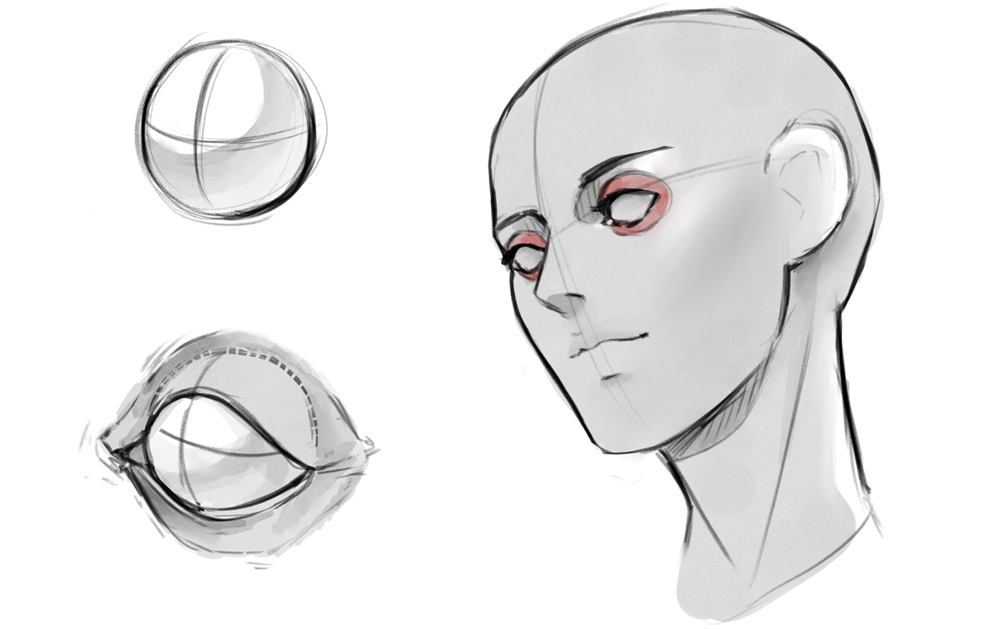
2. Real Eyes vs Anime Eyes: Proportions
Have a look at the image below to see the difference between real eye proportions and anime-style proportions.
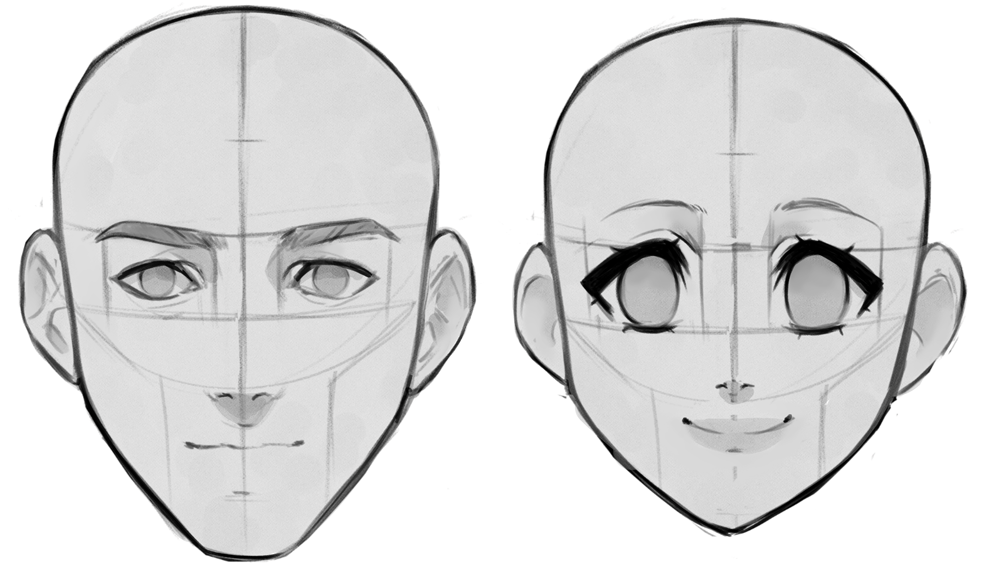
3. Variations
Since there are so many types and shapes when it comes to anime eyes, first you need to think about what kind of eyes you want to create.
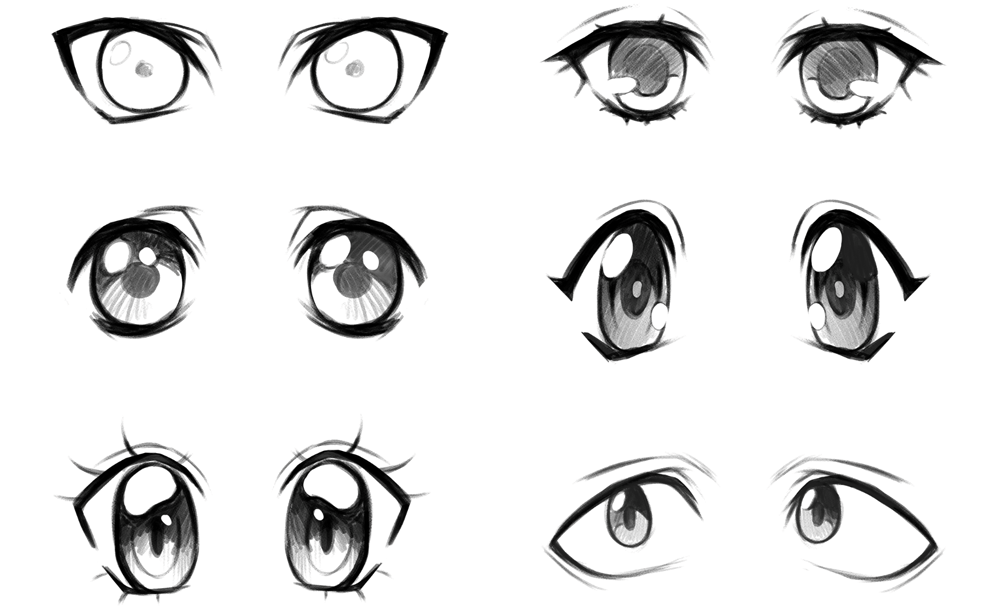
4. Styles and Greyscale
This is a good way to approach the exaggerated version of anime eyes. Starting from some elongated shapes, add the necessary gray tones to create depth, always keeping the highlights and the structures that are most interesting to you in mind. See that in steps 1 and 2, I've only sketched the basic structure of the eye. Here, you get the base for your eye and a guide to help you figure out where to place the grey tones.
In step 3, I apply subtle grays (I make the pupil area a little darker than the rest of the eye).
In step 4, I add darker grays to create depth on the upper part of the eye because the eyelid casts shadows on the eyeball. In this step, I experimented a bit and added a lighter grey in the center of the pupil, to insert some originality.
In steps 5 and 6, I define and enhance the grays and textures.
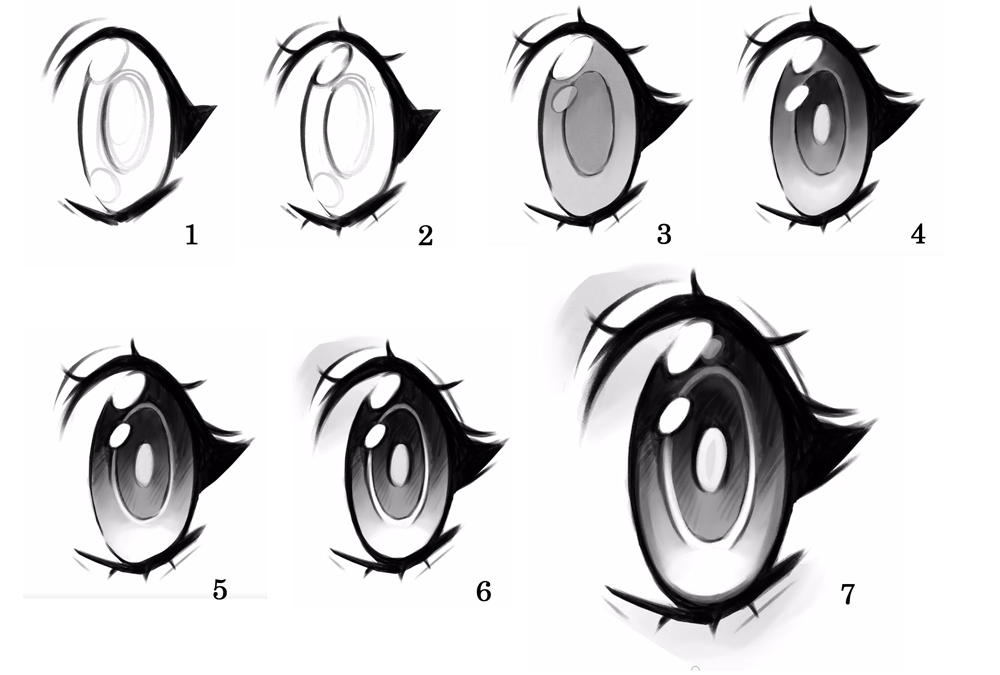
In step 7, I brush up and detail all areas, as well as adding some extra shine a little less intense than the rest of the highlights.
To see all the details of this process, please have a look at the video at the beginning of the tutorial.
5. Shapes and Colors of Anime Eyes
It is helpful to divide the eye creation process into a few steps.
Let's go back and break it down once more and add the coloring process. Let me show you some coloring techniques parting from the grayscale drawing that we already have from the previous part:
Remember: On top of the basic grays with their respective gradients, add brightness and textures that match the style of your drawing (see the example in the previous point).
Steps 1 and 2, start by making the eyelids, this will help you to figure out where to place the iris and the rest of the eye.
In step 3, add some basic grey tones (check chapter 4. "Styles and greyscale") and then…
In step 4, I set the color layer's blending mode. In this case, I used Overlay, but you are free to try a few out and choose another mode that you like better. This way, the color that you add will be perfectly integrated with the gray tones. On the right, you can see where the blending modes for layers are located in my software. The default mode is "Normal". From here you can play around and find which mode you are comfortable with.
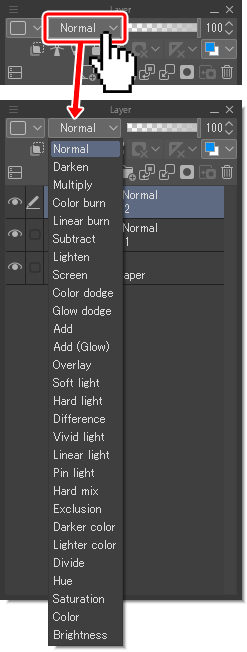
If you're aiming for colorful, engaging anime eyes, vibrant, saturated colors may be best.
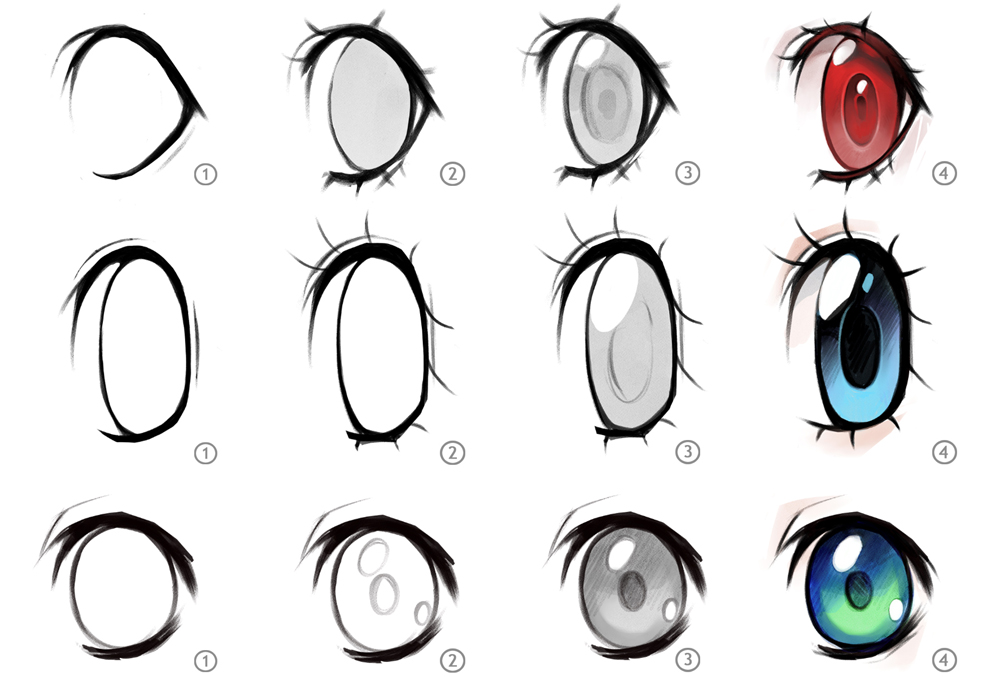
6. How to Color Anime Eyes
Here you can see the results from using different colors and blending modes. I used the Overlay mode for purple, Vivid Light for yellow, and Pin Light for the blue tones and the pink details. They blend great with the grey layer.
The key is to know where you want to place the grey gradients, the darker areas, and the highlights. Please go back to chapter 4. "Styles and greyscale" when in doubt.
Try different colors and see which ones are best for the effect you're trying to achieve. In this illustration, I chose two complimentary colors: purple and yellow – with pink and blue tints.
Grayscale coloring steps:
In 1, I simply started with the previously created grayscale drawing.
In steps 2 and 3, choose any color you fancy —purple, with some blue in my case— and try a blending mode that blends well with the greyscale.
In steps 4 and 5, I add some yellow using the Vivid light blending mode.
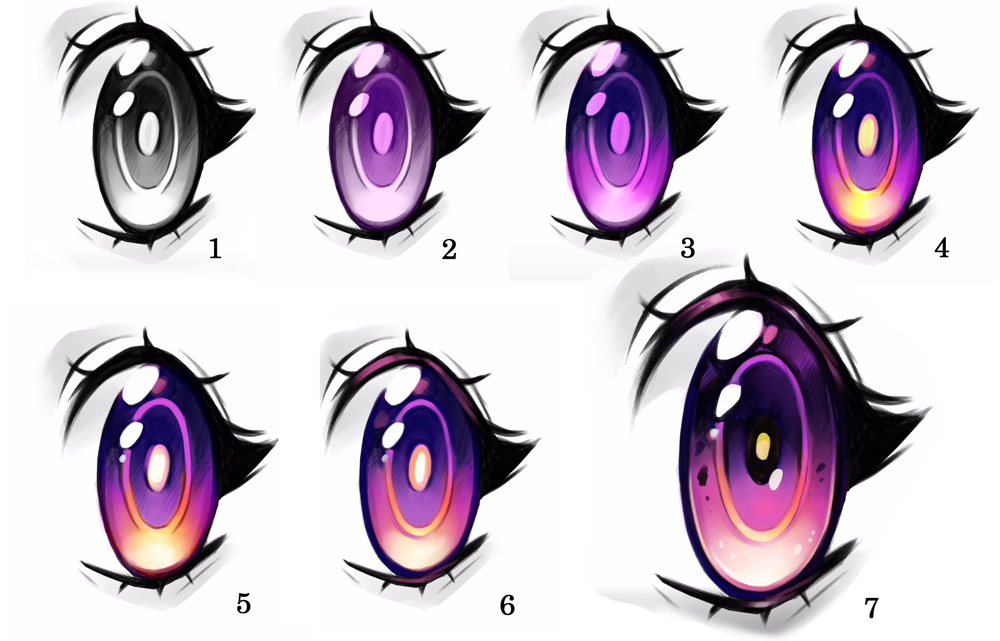
In step 6, I usually soften the dots a bit, by using the eraser or decreasing the layer opacity.
Finally, in step 7, I just add the finishing touches to emphasize volumes and textures.
7. Expressions for Anime Eyes
In real life and in the manga/anime world, eyes are one of the most important features to express emotion. Remember that a series of facial muscles tighten or relax, depending on the expression you want to achieve.
Let's take a look at the eyelids, the inner eye, and the eyebrows.
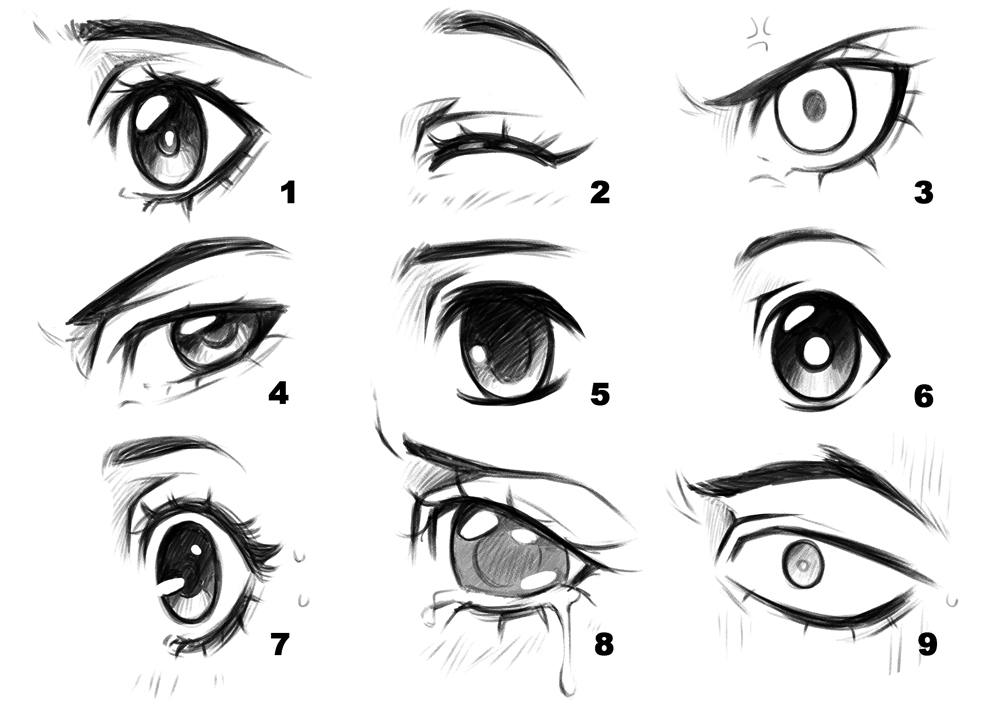
The emotions intended in these examples are easy to understand.
In example 1, the eyebrow is a bit tense, but the eye is relaxed and shining. This conveys a worried state or maybe missing someone or something.
In example 2, the eyebrow is arched vertically, and the eye is closed, so we can deduce that the character is happy.
In the next example (3), there is no shine to the eye, the iris is completely white, and the pupil is reduced significantly. This shows that the character is aggressive. Note that the eyebrow is arched in the opposite direction of the happy one in example 2, which also signifies anger.
Let us check all these expressions to deduce their meaning: 4 is suspicion, 5 is worry, 6 is neutral or observing, 7 is shock, 8 is sadness, and 9 is shock or madness, depending on the situation.
8. Final Illustration and Anime Eyes
Here is a character illustration with anime eyes. Note how the colors and shapes work together.
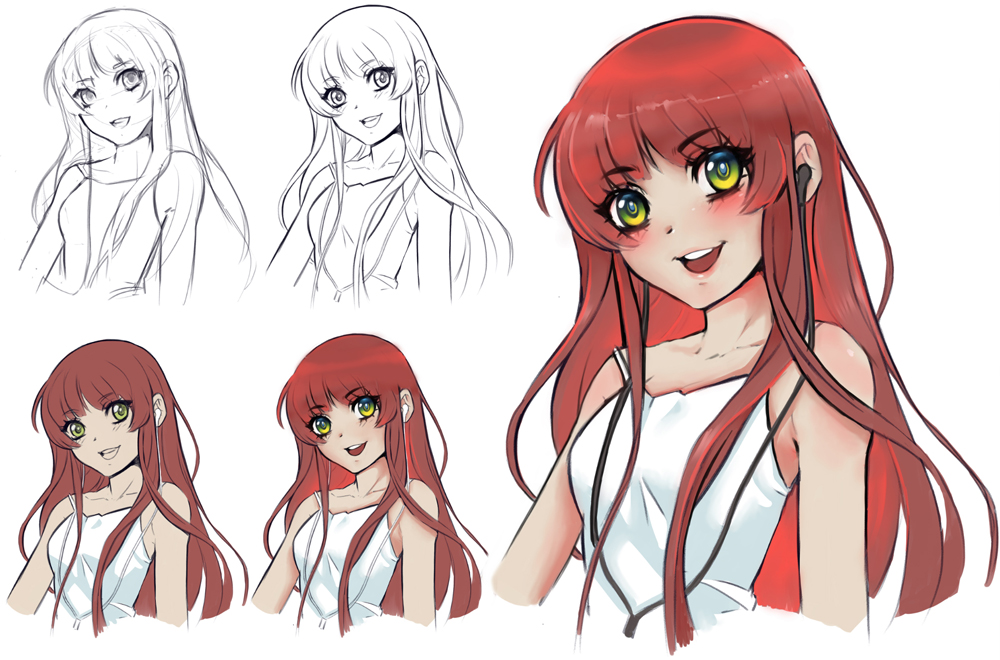
Source: https://www.clipstudio.net/how-to-draw/archives/162395
0 Response to "How to Draw Kawaii Anime Eyes"
Post a Comment